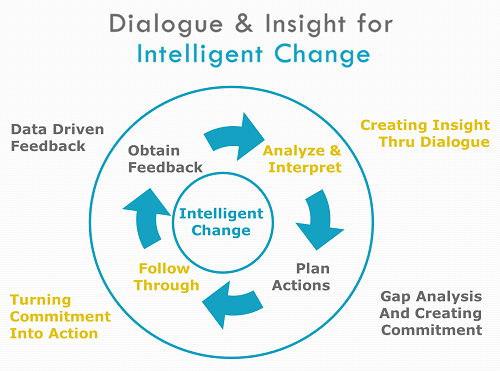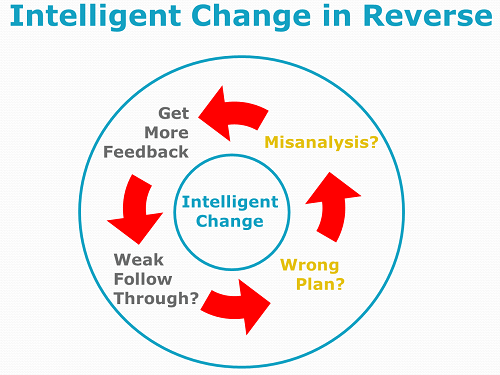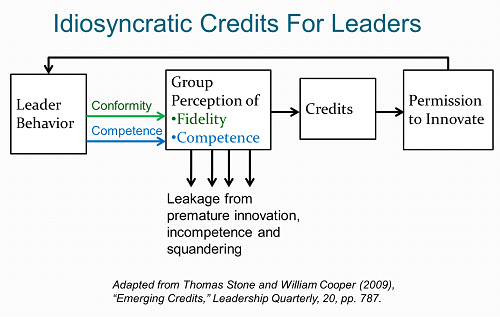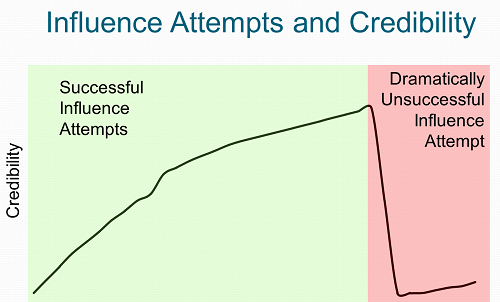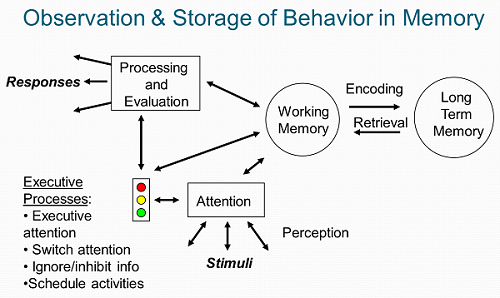When you walk in the room, who shows up for Read more →
Coaching for the Long Hill of Change
Allen Slade
Last May, I rode my bike in a century. I had completed 50-mile rides before, but I had never ridden 100 miles in one day. I trained hard, but not hard enough. About mile 60, I boinked. My energy reserves were depleted, and my speed dropped five miles an hour. Halfway up a long hill, I stopped. I had to catch my breath and decide if I was going to finish. I completed the hundred miles, but it was a close thing.
Like the long distance cyclist, leaders must be internally motivated. External praise is rare. The cheers of the crowd are too distant to carry you up the hills. You cannot afford to boink at the 60 mile point.
There are signs of leadership fatigue everywhere. At a leadership conference last week, one of the keynote speakers suggested we give up trying to change large organizations. Several panelists talked about the loneliness of leadership.
Leadership lite is about prestige and power, personal glory and personal gain. Regular readers of this blog know that I do not prescribe leadership lite. In my experience, the challenges of true leadership are large. Change leaders must master the four C’s: commitment, competence, capacity and character. In general, change leaders have to work longer, harder and smarter than the people around them.
I don’t intend to discourage true leaders. You need to have realistic expectations of the leadership challenges you face. But you also need support. You probably will not find encouragement from the people you lead. You may not find support from your peers, especially if you are competing with them for budget, talent or promotions. And, if your own leaders are fully engaged, they may be more discouraged and stressed than you are.
There is hope. You are not condemned to a life of lonely leadership. You simply need to gather the support you need.
Use the support you already have. Reach out to your close friends and family. Engage your circle of trusted advisors. Talk about your challenges and your discouragement.
Once you become an executive, you probably should hire an executive coach for yourself. Even before then, if you are leading change, investigate whether your organization will provide a leadership coach. A good coach will provide real and present encouragement. A coach will also help you find the support you need in others. And, a coach will help you develop the commitment, competence, capacity and character you need to lead change.
Leading change requires you to climb the long hills without much encouragement. Get coaching so you can keep pedaling.
Compassion and Change
Allen Slade
Your character determines your impact as a leader in the midst of change. Character is one of the four C’s you need to master for change:
Commitment. Embrace the change. Jump into the next challenge.
Competence. Become better at change. Grow by tackling new challenges, playing with the new system, applying the new concept or talking to the new person.
Capacity. Be able to change quickly and often. Multi-task competing changes. Manage planned change, but also be able to “ready, fire, aim.”
Character. Be known for your integrity and compassion.
When I think about character, I see integrity as tough and compassion as gentle. Leaders clearly need to be tough to drive change. Your integrity should be rock solid, especially during tough transitions. To be known for integrity, you should be a truth teller and a promise keeper.
But how about compassion? How does this gentle character trait help your change leadership?
Change creates stress. It disrupts your followers’ sense of stability, causing them to feel adrift. Employees’ implicit understandings about job security, rewards, roles and responsibilities are shaken. Their relationships with top executives, you as a leader and even their peers can be destabilized.
One way to create stability during change is with compassion. Compassion begins with listening. If a change creates uncertainty, allow people to express their distress to you. Empathize with their feelings.
Next, be willing to act on their concerns. Provide real help. This means addressing their needs, whether it be for information, a bit of slack on deadlines or practical assistance in accomplishing their tasks.
Often, compassion requires personal sacrifice. To meet the needs of the people you lead, you have to devote extra time and energy to them. This is especially tough in times of transition, because you are also stressed. You need to be hardy enough to be a servant leader. You will need to give more – work longer, invest more emotionally, listen when you would rather talk.
Branding yourself as a servant is not just something for a job interview. I believe leaders are called to serve. Servant leadership is a high calling to a lowly state. The most extreme example of servant leadership is celebrated at Christmas:
In your relationships with one another, have the same mindset as Christ Jesus: Who, being in very nature God, did not consider equality with God something to be used to his own advantage; rather, he made himself nothing by taking the very nature of a servant. (Eph. 2: 2-7).
As a leader in the midst of change, you need commitment and competence. You need capacity so that you can give more. Your character should combine integrity and compassion. Then, you can lead through the tough times and earn the proud title of servant.
Integrity and Change
Allen Slade
In Faster Change is Your Only Advantage, I wrote about three C’s you need to master for change:
Commitment. Embrace the change. Look forward to change. Jump into the next challenge.
Competence. Become better at change. Grow by tackling new challenges, playing with the new system, applying the new concept or talking to the new person.
Capacity. Be able to change quickly and often. Multi-task competing changes. Be able to manage carefully planned change, but also be able to “ready, fire, aim” without detailed plans.
These C’s are still important. But there is a fourth C:
Character. Be known for your integrity and compassion.
We will look at compassion in our next post. Today’s focus is the need for integrity in the midst of change.
Your integrity as a leader should be rock solid at all times, especially during tough transitions. To be known for integrity, you should be a truth teller and a promise keeper.
Truth tellers mean what they say and say what they mean. They avoid both active deception and passive deception.
Being a truth teller does not mean that you violate confidences. Sometimes, managers are privy to information that they cannot share with their team. For example, during a reorganization, employees may ask if their jobs are secure. If layoffs are possible, do not falsely reassure employees. But you also should not jump the gun. Instead, you may have to say “I don’t have any information to share with you at this time.”
Promise keepers make strong promises and keep them. Chalmers Brothers distinguishes three kinds of promises:
“Strong promises: Promises that I am absolutely committed to keeping. You can count on me.
“Shallow promises: These look like a strong promise, but what I don’t say out loud is ‘unless X or Y happens.’ . . . Here, we reserve a private ‘out’ for ourselves, but we don’t let the other person know.
“Criminal promises: These are promises that at the moment of making, we know we have no intention of keeping.”
A reputation for integrity requires making strong promises and keeping them. Then, people will know you are as good as your word.
Promise keepers may find it necessary to revisit agreements when conditions change. The key is how you change the agreement. If you cannot keep a promise, you should proactively go to the other party and attempt to negotiate a new agreement that is acceptable to both of you. Then, people can rest easy in your integrity. They know you will not forget your promises or unilaterally change your commitment.
Contrast a promise keeper with people who do not make strong promises:
They may avoid strong promises by saying “Sounds good.” or “I will try to . . . .” They may keep a private “out” that excuses them from keeping a promise. Or they may make a criminal promise with no intention of keeping it.
Shallow promises, private outs or criminal promises damage your reputation. Avoid them by keeping your promises.
Bottom line: Treat people with respect by telling the truth and keeping your promises. They will follow you confidently during today’s change and the changes to come.
If you do not have the reputation you want, start building credibility today. Tell the truth when a lie would be easier. Keep a promise that hurts. Proactively renegotiate a commitment that you have the power to ignore or unilaterally change. Building your reputation takes time and repeated testing under pressure. Be consistent and patient to grow your reputation.
If you are already known for your character, protect your good name by continuing to be a truth teller and a promise keeper. Then, your character will complement your commitment, competence and capacity to change.
Unlock Your Habits With Data
Allen Slade
Leaders are creatures of habit. We hit upon a successful approach to communication, planning, decision making or hiring and we stick with it. Habitual behavior is very sensible. What worked yesterday is likely to work today. Yet, habits can become handcuffs. Habits may be comfortable and easy, but disaster looms around the corner.
As a leader, how do you know when to change? How do you unlock your habit handcuffs? You need data.
 In the FIRST Lego League robotics competition, my sons’ team collected lots of data. They programed a wheeled robot to run a mission in 2 minutes and 30 seconds. The team spent months strategizing and reprogramming to beat the time limit. Data on the robot’s speed and reliability were key to continuous improvement.
In the FIRST Lego League robotics competition, my sons’ team collected lots of data. They programed a wheeled robot to run a mission in 2 minutes and 30 seconds. The team spent months strategizing and reprogramming to beat the time limit. Data on the robot’s speed and reliability were key to continuous improvement.
As a leader, you need data to know when your habits are ineffective. I advise you to build your own leadership scorecard. Track data on at least four different outcomes. Use a mix of “soft” data (employee and customer satisfaction, 360 data) and “hard” data (sales, costs, productivity and quality). If your organization produces reports for you, I encourage you to create your own leadership scorecard. If your organization doesn’t generate the data you need or if you are an entrepreneur, you may need to collect the data first.
You need to track these outcomes over time. Data from one point in time does not drive action nearly as well as trend data.
Once you have the data, build a spreadsheet or put it on a whiteboard. Avoid data overload by keeping your leadership scorecard focused. It should fit on a single sheet of paper or part of your whiteboard.
Once your scorecard is built, you are ready to start the cycle of intelligent change.
When your habits are not working, your scorecard will show it. Engage your team or your circle of trusted advisors in dialogue. Analyze the data and interpret the causes. Plan actions to fill the gaps and follow through. Then collect more data.
Bottom line: Leaders need to be data-driven. Create your own leadership scorecard to unlock the handcuffs of habit and reprogram your own behavior.
Create a virtuous cycle of intelligent change. Don’t wait for a crisis to look for numbers. Being data-driven should be your new habit.
At the Gaps, Go Slow to Go Fast
Allen Slade
In organizations, faster change is your only long term advantage. But sometimes, speed prevents people from making the change successfully. By going fast, you create errors and friction, causing the change to be less successful.
My sons are on a team in the FIRST Lego League robotics competition. They program a wheeled robot to hit levers, fling a ball and grab things. The final task is to drive up a ramp and park on a teetering platform.
The robot must be centered or the platform will tilt and the robot will fall off. The robot’s behavior is unpredictable, especially at gap between the ramp and the parking spot.
 When you are leading change, do you go too fast? Do you “program” your team to slam through obstacles as quickly as possible? You can go fast to go slow. Don’t be surprised if your change goes off track.
When you are leading change, do you go too fast? Do you “program” your team to slam through obstacles as quickly as possible? You can go fast to go slow. Don’t be surprised if your change goes off track.
The solution? Slow down at the gaps.
The robotics team reprogrammed the robot to climb the ramp slower. To jump the gap, they slowed the robot down even more. Jumping the gap is less violent and the robot is less likely to be thrown off kilter.
Bottom line: Go as fast as you need for change. But if your change is going off track, go slow to go fast.
As a wise change leader, you need to know when to go slow and when to go fast. At the major transition points, allow people time to make sense of the change they face. By taking the time for dialogue and insight, you can create intelligent change. Go slow to go fast, and you can increase the odds of reaching your goal safely.
Put Your Personal Brand into Action
Allen Slade
Personal brands are important for entrepreneurs, leaders and jobseekers. To maximize your impact, you need a personal brand statement like this:
For [a specific person or group], I want to be known for [six adjectives] so I can deliver [valuable outcomes].
To make a difference, your brand has to move from words to action. You need to turn the wheel of intelligent change.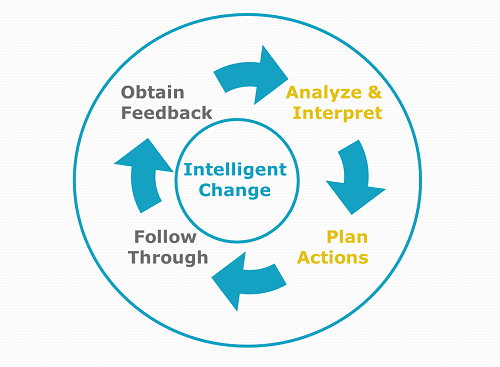
1. Take your personal brand statement and plan an action. For a jobseeker, you might revise your LinkedIn profile. For a leader, you might change a meeting format. For an entrepreneur, you might revise your company’s website. Whatever you do, ask “How can this profile/meeting/website/etc. project my personal brand better?”
2. Make the change on a small scale. Give it your best shot.
3. Get feedback. On the first turn of the wheel, ask someone in your circle of trusted advisors how they think the new approach reflects your personal brand.
4. Analyze and interpret the feedback. This is critical. To make intelligent change, you will not blindly do everything your advisor suggests.
Your next steps depend on the nature of the feedback.
Continue Forward Movement
Suppose your advisor likes what you have done? On the next turn of the intelligent change wheel, use the positive feedback to move ahead:
Keep going. Do more change in the same direction. If your change was tightening up your resume, cut more factoids that don’t support your brand. If your meeting approach was to generate more empowerment and participation, give up even more control over the agenda. If your website redesign involved a powerful brand message, add graphics to reinforce the message.
Go public. Test your idea beyond your circle of trusted advisors. Put your LinkedIn profile online, hold the meeting with your new approach or launch your website.
Switch topics. After you get this part of your brand close enough, switch to another arena. As a jobseeker, you might work on interview responses to reflect your personal brand. As a leader, you work on one-to-one communication to drive empowerment. As an entrepreneur, you might develop your elevator conversation. Whatever you work on, use your brand statement to plan your action, take action, get feedback and think hard about how well you are projecting your brand image.
Whatever you do next, plan it carefully before taking action. Then, get more feedback to get ready for the next turn of the wheel.
Get Unstuck
If you receive mostly negative feedback, what should you do? Like a car stuck in the snow, consider using reverse. Go backwards through the intelligent change wheel to figure what you can do to get unstuck.
Was your follow through weak? You had a great plan for a great brand, but you got sloppy on implementation. Polish your implementation and get more feedback.
Was your plan off target? Maybe the problems is with the action you took. Maybe your brand statement is off – your six adjectives may not create a desirable image, your outcomes may not be valued by your target group or, most troubling, you may not be credible enough to pull it off. Revise your planned action or revise your brand, follow through and get more feedback.
Have you misinterpreted the feedback? It is possible that the feedback you received was off base. In my experience, if you ask someone for feedback on your resume, they almost always suggest changes. Their suggestions reflect their personal style. But, if one advisor suggests a chronological resume, the next advisor suggests a functional resume and the third advisor suggests an accomplishment based resume, you know they can’t all be on target. Be careful with discounting feedback, however. Generally, think hard about your follow through and your plan before you reject feedback.
Whether the feedback you receive on your brand action is positive, negative or a mix, continue to take action and get more feedback. I have been speaking about personal branding for years, yet I still continue to work on my brand. I will be done defining, articulating and delivering on my personal brand after someone gives my eulogy. I humbly suggest that you should do the same. Until then, continue to turn the wheel of intelligent change to polish your brand and deliver valuable outcomes to the people you serve.
When Your Personal Brand is Your Business Brand
Allen Slade
The essence of your personal brand is simple: When you walk through the door, who shows up for the other people in the room? As a jobseeker, your personal brand captures the service you are offering to an employer. As a leader, your personal brand is the influence you exercise in driving innovation and growth.
How about entrepreneurs? As the boss, you aren’t a jobseeker trying to nail the interview or an emerging leader trying to get people to start following you. Entrepreneurs are busy with operations, finance and market development, so “personal branding” may seem like a waste of time.
Wrong. Personal branding is vital to entrepreneurial success. When you are an entrepreneur, you are your business. When you market your business, especially in the early years, you are marketing yourself. In many ways, your personal brand is your business brand.
At one of my recent personal branding seminars, a twenty-something woman shared her passion and unique business model. However, she was outfitted and groomed for comfort rather than marketing, undermining her great ideas.
So, who shows up for your prospects when you walk in the room? Do you project the traits necessary to win their business? Here are some hints on developing your personal and business brand.
Be authentic. Make sure your personal brand is completely compatible with the real you. And make sure your business fits you as well. Being authentic ensures you (and your business) will avoid false advertising. If your brand promises what you can actually deliver, you and your customers will prosper.
Project an integrated image. This is Branding 101. Once you have specified your desired brand, review every part of your public image to make sure it is consisted with your brand. Review everything: marketing strategy, service offerings, elevator pitch, brochures, website, blogs, business cards, LinkedIn profile, Facebook page, Twitter profile and tweets.
Test and adjust your brand. Get feedback as you roll out your brand. You want to test an ejection seat before you need it. So test your brand privately before you go public with it. Early on, test your brand with yourself. Adjust your public materials to fit your brand statement, and adjust your brand statement to fit your previously successful public materials. Next, run your proposed brand by your circle of trusted advisors. Hand out business cards to friends and family. Practice your elevator pitch. Ask people what they think. Then, do a small scale public unveiling. Pilot test your newly articulated brand with both prospects and trusted current customers. Get their feedback and continue to adjust until you hit a sweet spot – a brand that is personally authentic and offers compelling benefits to your customers.
At the branding seminar, I offered one more piece of advice:
Dress (slightly) better than your customers. I recommend that you dress one half step better than your customers. If they wear business casual, you iron your khakis and polo. If they wear a blazer, you add a tie. If they have a skirt, you were a dress or suit.
The twenty-something entrepreneur caught the personal brand bug. She emailed the next week about changes she was making in her brand image. “I’m trying to dress more professionally these days. Sounds simple, but for me, it’s really hard. Especially the whole ‘make-up’ thing!”
While you may not struggle with make-up as part of your personal brand, you will struggle. Your brand is the essence of who you are and the value you add to the people around you. Getting it right requires time, energy, thought and feedback. And, when it clicks, you and your business will succeed.
Change in Your Personal Leadership Brand
Allen Slade
It is essential for you to have a personal brand statement. I like this style of brand statement:
For [a specific person or group], I want to be known for [six adjectives] so I can deliver [valuable outcomes].
When my clients ask what adjectives they should choose, I respond “What outcomes do you want to deliver?” For my leadership coaching clients, their outcomes usually include maximizing their influence as a leader.
While working on Ford’s employee opinion survey, the CEO wanted to add questions about empowerment. With Ford’s global operations, we delivered the survey in a number of languages. The word “empowerment” proved tricky for many of our translators. In German, the question “My manager understands how to empower people” came back as “My manager understands how to turn on the lights.” I believe in testing my ejection seat, so we found and corrected the mistranslation before the survey went live.
Yet, too many managers focus on turning on the lights – getting the budget set, scheduling activities, communicating basic information, producing management reports. A light switch operator doesn’t really have a personal brand. They are a commodity.
Your impact as a leader is the scope of influence you can exercise. If you can’t drive innovation and growth, you are just turning on the lights. Could you be easily replaced by another manager? If so, you need a new personal leadership brand.
If you wish to be known as a leader and not just an individual contributor or manager, then your personal leadership brand must highlight your ability to innovate/change/grow a team, an organization or a business.
Yet the best leaders do not tilt at windmills like Don Quixote, attempting (and failing) to do the impossible. The best leaders look for difficult challenges that stretch themselves and their team without destroying the leader’s credibility. Thomas Stone and William Cooper capture the tension between innovation and credibility in the following process:
It is a curiosity of leadership that conformity builds credit for future innovation. Going along now creates the opportunity to innovate later. The “leader” who avoids risk does not spend any credits. The leader who pushes too far too fast burns credits without gaining influence.
If you are not content with being just a manager, you can change your personal leadership brand. Be patient. Becoming an innovative and influential leader takes repeated success over time. When you first step into a job, you start with a small cache of innovation credits. If you spend those credits wisely, building your group’s perception of your fidelity and competency, you gain more credits. Bit by bit, you are able to innovate more boldly, expanding your influence well beyond the range of indifference. In the image below, this gradual increase in credibility, influence and innovation is captured in the green area.
Since true innovation is risky, you may have a dramatically unsuccessful influence attempt that will erase most of your credibility. In the red area above, the impact of a major misstep leads to a resetting of the credibility curve. Many leaders find it necessary to retreat, operate largely in the range of indifference, until they regain the credibility to tackle new challenges. The loss of credibility can be so severe that the leader needs to start over in a new job or a new organization.
Managers who avoid risk will not play this game. They will stay in the range of indifference, never risking their credibility and hoping to never fail. They may or may not fail, but I can largely guarantee that they will not experience dramatic success.
You have a choice. You can create a personal leadership brand involving wise risk taking to create innovation. Or you can create a safe style more appropriate for a manager. You can empower change, or you can just turn on the lights.
My personal choice was made a long time ago. The Slade & Associates brand is “Creating dialogue and insight for intelligent change.” I hope this blog helps create insight for you that will drive intelligent change in your leadership.
Jobseekers, Brand Yourself as a Servant
Allen Slade
In cover letters, resumes and interviews, jobseekers often give reasons that they want or need a job. “I am seeking a rewarding career in . . . .” “I enjoy . . . .” “I would like to apply for your opening in . . . .” “I am reentering the workforce after . . . .” While these phrases are not illegal, immoral or ungrammatical, they are a bit self-centered.
Career success does not flow from your needs alone. You will be hired to serve, not to be served. You will succeed when your interests and abilities line up with the organization’s needs. The sweet spot for your career is when ability, affinity and opportunity meet.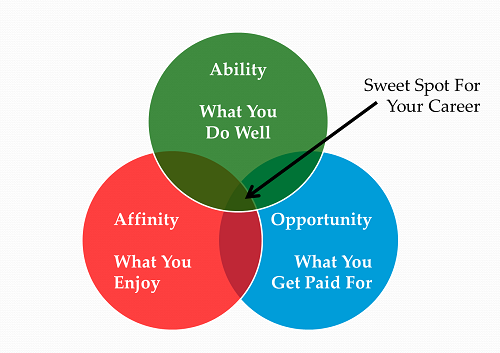
Hiring manager focus on the intersection of the green and blue circles. For hiring managers, affinity is a lesser priority than your ability to do the job. They want your competencies, capacities and commitments to solve their problems.
So, how do you shape a hiring manager’s perception of your ability to do the job? Managers quickly form an impression who you based on incomplete information. As I posted in The Problem with Your Personal Brand:
When you walk through the door, who shows up for the other people in the room? What image do people have of you? When I walk in, I would like to think that the “real” me shows up. Unfortunately, who actually shows up is an imperfect memory of me. . . . If only a partial image of the “real” you shows up when you walk in the room, you need a brand and a plan. You need a personal brand statement like this:
For [a specific person or group], I want to be known for [six adjectives] so I can deliver [valuable outcomes].
Bottom line: When seeking a job, brand youself as a servant. Hiring managers care about your ability to deliver valuable outcomes.
I advise my career coaching clients to take three steps before every job application:
1. Research. Investiage every job thoroughly before you apply. Go beyond studying the industry and the position itself. Figure out what problems keep the hiring manager awake at night.
2. Target your brand. Figure out the six adjectives that accurately describe your competencies, capacities and commitments to help solve those problems.
3. Articulate your brand. Then, craft your application and your interview responses to give a powerful brand message: Hire me and I will help solve your problems.
If you take these three steps, the hiring manager will be favorably inclined to pursue you as a candidate. And, you are likely to get the career outcomes you seek – meaningful work, concrete rewards, an opportunity to grow – because you are serving the organization well.
The Problem with Your Personal Brand
Allen Slade
When you walk through the door, who shows up for the other people in the room? What image do people have of you? When I walk in, I would like to think that the “real” me shows up. Unfortunately, who actually shows up is an imperfect memory of me. Here’s a picture of the cognitive process of what people remember about you:
Bottom line: The problem with your personal brand is every step of cognition simplifies and distorts the memory of who you are. As Leonardo DiCaprio’s character in the movie Inception says: “But I can’t imagine you with all your complexity, all your perfection, all your imperfection.”
If only a partial image of the “real” you shows up when you walk in the room, you need a brand and a plan. You need a personal brand statement like this:
For [a specific person or group], I want to be known for [six adjectives] so I can deliver [valuable outcomes].
For example, here is part of my own personal brand statement:
For my leadership coaching clients, I bring powerful listening, insightful curiosity and straightforward knowledge to create maximum leadership presence, personal effectiveness and organizational success.
Here are some suggestions on how to craft your own personal brand statement:
Target your brand. You should have a targeted personal brand statement for each group or person you want to impact. For myself, I have three brand statements. You need at least two brand statements.
Be organized. Gather all the data about how others perceive you – performance reviews, personality profiles, 360 feedback, key emails, verbal impressions, etc. Then take at least four hours spread over several days to draft your personal brand statement. Here is a personal brand worksheet to help you get started on defining your own personal brand statement.
Be authentic. Make sure your personal brand is completely compatible with the real you. Being authentic moves your personal brand from false advertising to true marketing. If your personal brand promises what you can actually deliver, you and the people you serve will be happier.
Get feedback. Once you have a draft of your personal brand statement, share it with your circle of trusted advisors. Their reaction to your brand can help you test its authenticity and its value to the people you want to serve. Your circle of trusted advisors should include mentors, spiritual advisors and, ideally, a certified career coach, leadership coach or executive coach.
When you craft a personal brand statement, you help focus the impressions others hold about you. You open doors to new leadership and career opportunities. Then, when you walk in the room, “who shows up” for the other people is the authentically influential you.









